My second opportunity to volunteer for the National Park Service (NPS) is at Pipe Spring National Monument and what a fantastic experience it proves to be: a wonderful team, a wide variety of tasks, the challenge of learning new skills, mental stimulation, physical activity and fun too! We’re here for the three months from early April until the beginning of July.
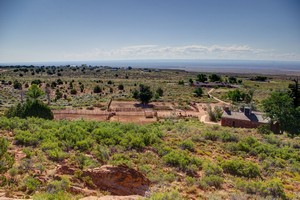
Let’s set the scene: Pipe Spring sits nestled against the Vermillion Cliffs on the Arizona Strip, the area of land stretching from the north rim of the Grand Canyon to the cliffs behind the Monument. The Strip is one of the plateaus of the Grand Staircase Escalante and lies between the Chocolate Cliffs to the south and the Vermillion to the north. The Grand Canyon cuts the region off from the rest of Arizona and consequently it has stronger cultural and social ties with Utah.
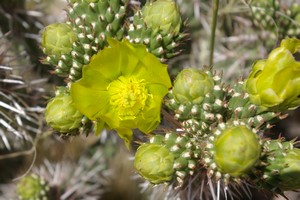
This is an arid environment and the area around the monument used to support extensive tall grassland but is characterised today by sagebrush, cacti and bare earth. The change is largely due to overgrazing: huge herds of sheep and cattle brought in by the early Mormon settlers.
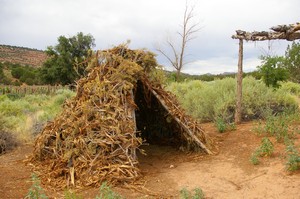
American Indians have lived in the area for centuries, dating back to the Ancestral Pueblo. For the last nine hundred years it’s been home to the Kaibab Band of Paiute Indians. They were attracted here by the naturally occurring springs emerging at the base of the cliffs. These in turn are the result of the underlying geology: the Sevier Fault, the impermeable mudstones to the east, the permeable sandstones to the west. The seemingly unending supply of water is an illusion. Current use has outstripped the rate of aquifer fill and it’s estimated that the springs will dry up completely sometime in the next fifteen years or so.
Water underpins the entire story at Pipe Spring: the scarce and valuable resource is the difference between survival or not in this desert land. Its presence here also attracted the first Euro-American settlers, the Mormons, who took control of the springs, built a fortified structure over the water source and used the location as the headquarters of a large scale ranching operation.
The arrival of white settlers had a devastating effect on the Paiute: their water source was no longer freely available, the grassland on which they were dependent for hunting and gathering was being demolished by the herds. The population plummeted from an estimated 5,000, before European arrival on the continent, to a low of 83, recorded in the US census of 1910. Today the tribe are making a steady recovery and state that "one of [their] primary goals is to create economic development on tribal lands while protecting natural resources."
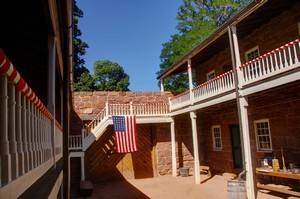 The Fort - Winsor Castle
The Fort - Winsor Castle
Named for the first ranch manager, the fort became known as Winsor Castle; an enclosed courtyard created by buildings on two sides, linked by strongly gated end walls. The spring is directly under the north building, the water channeled across to the south side emerging in the cold room. It was this room that allowed for the short term storage of cheese and butter, the main function of the ranch.
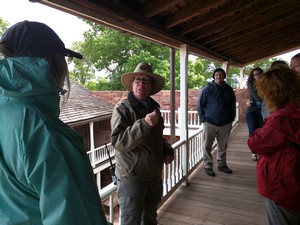 Tours
Tours
One of the main jobs as a volunteer ranger is giving tours. Here at Pipe Spring I get the chance to research, develop and present tours. It’s a great opportunity to learn and practice the skills of interpretation and I enjoy the process immensely.
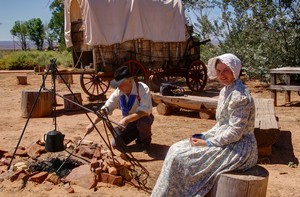 Pioneer Clothing
Pioneer Clothing
Another aspect of the job, often involves dressing in pioneer period clothes whilst illustrating some aspect of daily life. Here’s Brian and Anita playing the part.
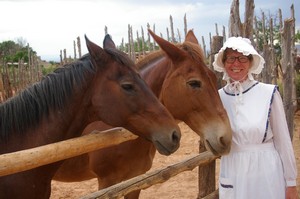 Red and Rowdy
Red and Rowdy
Here I am with Red the mule and Rowdy the horse. Part of our daily schedule involves feeding, grooming and general care of the equines. I can’t say I was normally dressed like this: that apron wouldn’t have stayed white for more than five minutes.
Whit and Tess
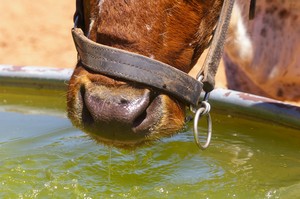
Our longhorn commemorate early steer ranched at Pipe Spring. Here’s Tess taking a slurp on a hot afternoon.
Rodeo!
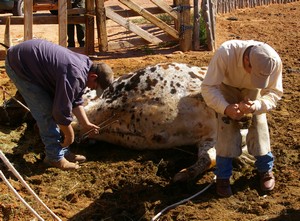
We all need a pedicure now and again whether we have two feet or four and the longhorns are no exception - it just takes a slightly different approach. They are large animals and those horns can pack a punch so the animals need to be contained and sedated. Watching the process is an amazing experience.
Them chickens is up to sumat
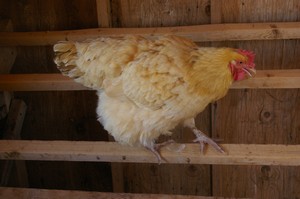
Fresh free-range eggs is a great perk of having chickens on the site. Feeding and getting them back in the coop at night is another of our jobs. This is Goldie ‘walking the tightrope’ along one of the perching bars on which the chickens usually sleep.
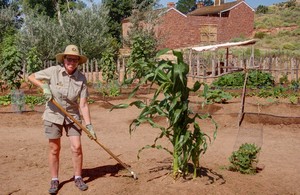 The Garden
The Garden
Another thoroughly enjoyable aspect of the work, gardening. However, my grasp of the English language proves insufficient for the task. I merrily tell other staff that I’d been out hoeing in the garden. This is immediately translated into American street slang causing ongoing amusement.
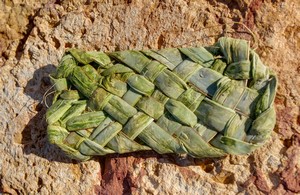 Demonstraions
Demonstraions
Demonstrating certain aspects of life relevant to the site was another engaging aspect of the job whether it was sharing information about Rowdy the mule or making twine or sandals from yucca. Here’s one I prepared earlier!
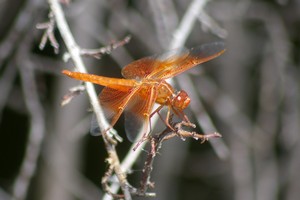 Flora and Fauna
Flora and Fauna
Flowering cacti bring bright colours to this pale landscape, insects flit across the still waters of the drainage ponds or pose in acrobatic stillness and lizards skitter amongst the dry undergrowth or blend into fence posts.
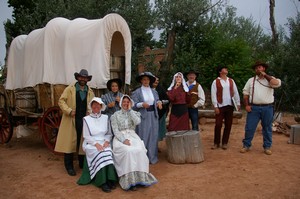 The Team
The Team
What a great team: welcoming, supportive, friendly and fun. I owe them all a huge debt. Here we are gathered around the chuck wagon on one of my last evenings.